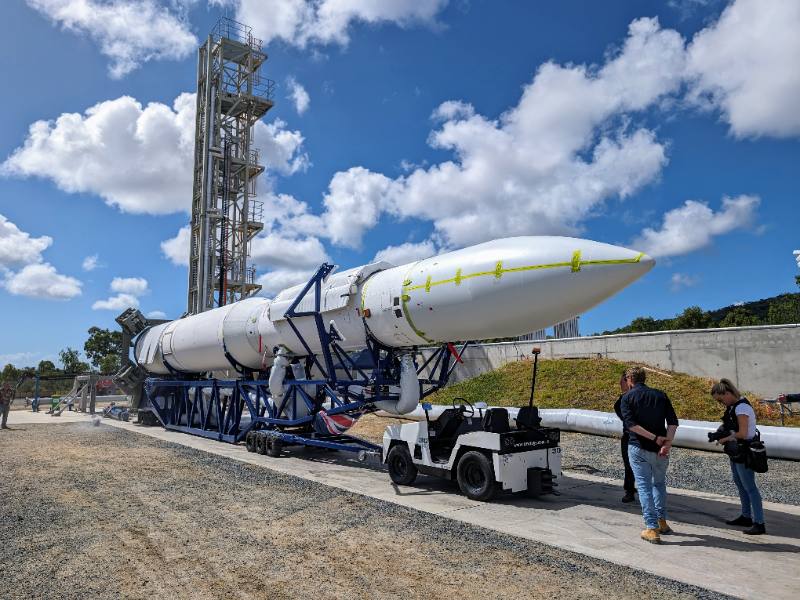The destructive weather systems that caused havoc in Tasmania in the past week reached as far as Bowen in Queensland, with Gilmour Space Technologies having to pull its Eris rocket from its vertical position due to high winds.
Chief executive officer Adam Gilmour said the weather had put a pause on planning for final wet testing, with wind speeds reaching close to the company’s self-imposed limits for the launch vehicle when it is in vertical, take-off position.
The Gilmour team returned the rocket to its horizontal position next to the launch pad.
“That weather system came around and made it very windy in Bowen, and it was getting close to the [wind speed] limits for having the rocket in its vertical position,” Adam Gilmour told InnovationAus.com.
“So, we made the decision to just bring the rocket back down again while the wind was strong. There are separate [lower] wind speed limits for when the rocket is horizontal,” he said.

The decision was purely precautionary. The rocket was not returned to the cyclone-proof Vehicle Assembly Building (VAB) and remains on its transporter-erector and hold down mechanism next to the tower.
“We don’t think they are going to be strong enough for the horizontal wind limit, but we’ve got it ready to go into the VAB. If the winds pick up, we can take it into the VAB within about half an hour.”
The weather events meant the company has paused it final wet tests and wet dress rehearsal. But with winds expected to have peaked on Thursday, the company has “a lot of our people back up on Tuesday and then it’s roughly one-week after that and we will finish with all the wet testing.”
Regardless, Gilmour is still in final discussions about securing a launch permit for the first test flight of its Eris launch vehicle from the Australian Space Agency.
While the launch facility licence for the Bowen Orbital Spaceport was issued by the agency in February, the permit for the launch is the final regulatory permission the company needs.
Once a permit has been approved, the Gilmour would enter a mandatory 30-day ‘notification’ period, so the earliest the flight can take place is now some time in October.
A spokesperson for the Australian Space Agency told InnovationAus.com that the launch permit assessment for the maiden flight of ‘Eris-1’ launch vehicle continues to progress.
“Global experience demonstrates designing, manufacturing and safely operating an orbital space launch vehicle is a complex undertaking, often involving unanticipated delays,” the spokesperson said.
“Ensuring the safety of the Australian public is a critical part of any permit assessment and the Australian Space Agency’s Office of the Space Regulator continues to work closely with Gilmour Space to progress outstanding matters.”
Ultimately launch permits under the the Space (Launches and Returns) Act 2018 are issued by Industry minister Ed Husic as long as he is satisfied that the criteria of the Act has been met – with this decision based on advice from the Australian Space Agency.
Do you know more? Contact James Riley via Email.

